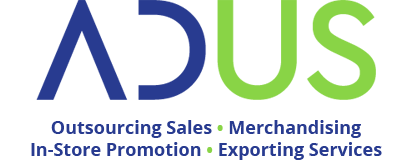B2B Analytics’ Services and Outsourcing Sales and Merchandising for FMCG
FMCG is a classic case of low margin and high volume business. Fast-moving consumer goods (FMCG) are products that are sold quickly and at relatively low cost.
Wednesday, February 28, 2018

Many fast moving consumer goods have a short shelf life, either as a result of high consumer demand or because the product deteriorates rapidly. Some FMCGs, such as meat, fruits and vegetables, dairy products, and baked goods, are highly perishable. Other goods, such as pre-packaged foods, soft drinks, chocolate, candies, toiletries, and cleaning products, have high turnover rates.
A Snapshot of the Greek Reality. It seems that the Greek consumer, despite trying to use offers and discounts from the supermarket chains, has not actively stopped visiting other sales channels for specific markets (bread products, meat) but also for personal research in quality and prices in order to make the most cost-effective purchases. At the supermarket stores, his presence happens at least three times a week. This is related to density and variety in special discounts and offers, while the level of purchases per visit tends to land to lower levels compared with those prior the crisis and this circularly entails an increased frequency of visits.
The food market is a complex business system that responds to the needs of consumers and to the complex behavior of the consumer based on the following parameters: (a) mobility, (b) the amount of purchases per visit, (c) the composition of products in the cart, (d) repeatability of purchases, (e) Selection criteria (offers, quality, help from specialized salesmen, etc.) in different channels (small retail, specialized stores such as butchers, supermarkets, bakery shops, etc.). Regarding purchases, the highest weighted cart per visit is recorded in the supermarket stores, which has the widest range of similarly competitive products (comparable at multiple criteria levels) and the time-saving in minimizing the visit to smaller retail channels.
The supermarket is considered to be the most trustworthy point of sale (approximately 75%) than other points of sale, while the quality and safety confidence ratio is close to 80%, as a result of the continuous investment to important infrastructure and processes in the chains, as well as the quality controls and know-how development for evaluating a large number of potential or existing suppliers.
B2B Analytics have been providing a critically helpful component for the FMCG Industry. Its further enrichment and effective use is of strategic importance for the industry. Modern Outsourcing Sales & Merchandising Services Providers may contribute to capture, produce and deploy B2B Analytics strengthening their cooperation with FMCG Providers.
The following overview relies on the capabilities of FMCG B2B Analytics provided by a 3rd party deeply involved in the Sales, Merchandising and Order Taking process as an enabling and value-adding service by the Outsourcer with respect to the FMCG Provider.
The services’ areas of an Outsourcing Provider to a FMCG Partner can be classified in a number of categories that reflect FMCG’s activities including investments and in-company resources. The main advantage of such Analytics is that they are produced and communicated right from the sales front and could be integrated to the FMCG’s corporate reporting, while they may be used to revise tactics and achieve better performance.
The contribution of B2B Analytics per area of Actionable Knowledge
FMCG Products Performance, e.g. Sales Growth Index in Supermarket chains
FMCG Marketing Strategy Return
Exploring Consumer Behaviour patterns at the points-of-sales to compare them with the right qualitative factors like increasing economic uncertainty that might appear on the horizon.
Challenges of Marketing Strategy:
· Declining Sales
· Shrinking Margins
· Stagnant Pricing
· Promotion Strategies
· Lack of Store Innovation
· Customer engagement strategy to enhance FMCG products experience.
FMCG Industry Direct Marketing Analytics:
Using proven analytics methodologies to marketing strategies through effective market research and customer segmentation, optimizing marketing mix strategies, optimizing promotion and positioning, and cross-channel synergies, maximize response rates through multi-channel campaign effectiveness while optimizing marketing spends, improving customer experience and maximizing profitability of fast-moving items.
Digital Marketing in Fast Moving Products FMCG:
In the high growth of B2B sector addressed by FMCG, predictive analytics consolidates the consumer experience in real-time to create and anticipate customer experiences to create profitable interactions and move them further in the buying cycle. Locational variables and browsing history are analyzed for geo-behavioral targeting and targeted advertising with contextual ads in fast-moving FMCG moving goods; while time-series are correlated with external factors to make predictions of sale volumes, fast-selling items and consumer trends.
Pricing of FMCG Products List:
Facilitating optimal pricing based on variable factors like festivals, seasonal demand, competitor launches, Government policies, geographies, consumer preferences and the like. Consumer trends, the rate of consumer churn and other variables are analyzed for optimal pricing solutions. An FMCG companies also factors-in the price elasticity of demand for various products to predict the impact of pricing on product sales.
Predictions of Price Elasticity on Demand (PED) typically help decide the pricing strategy, differential pricing policies based on demographics, where products are price inelastic.
Benefits of FMCG using Analytics:
· Market Equations helps organizations target and acquire profitable customers, enhance loyalty, minimize risk exposure and fraud
· Address Compliance Issues
· Reduce Operational Costs
· Maximize Revenue Growth and Profitability.
